
Radium - pioneer of light.
The Classic Lamps.
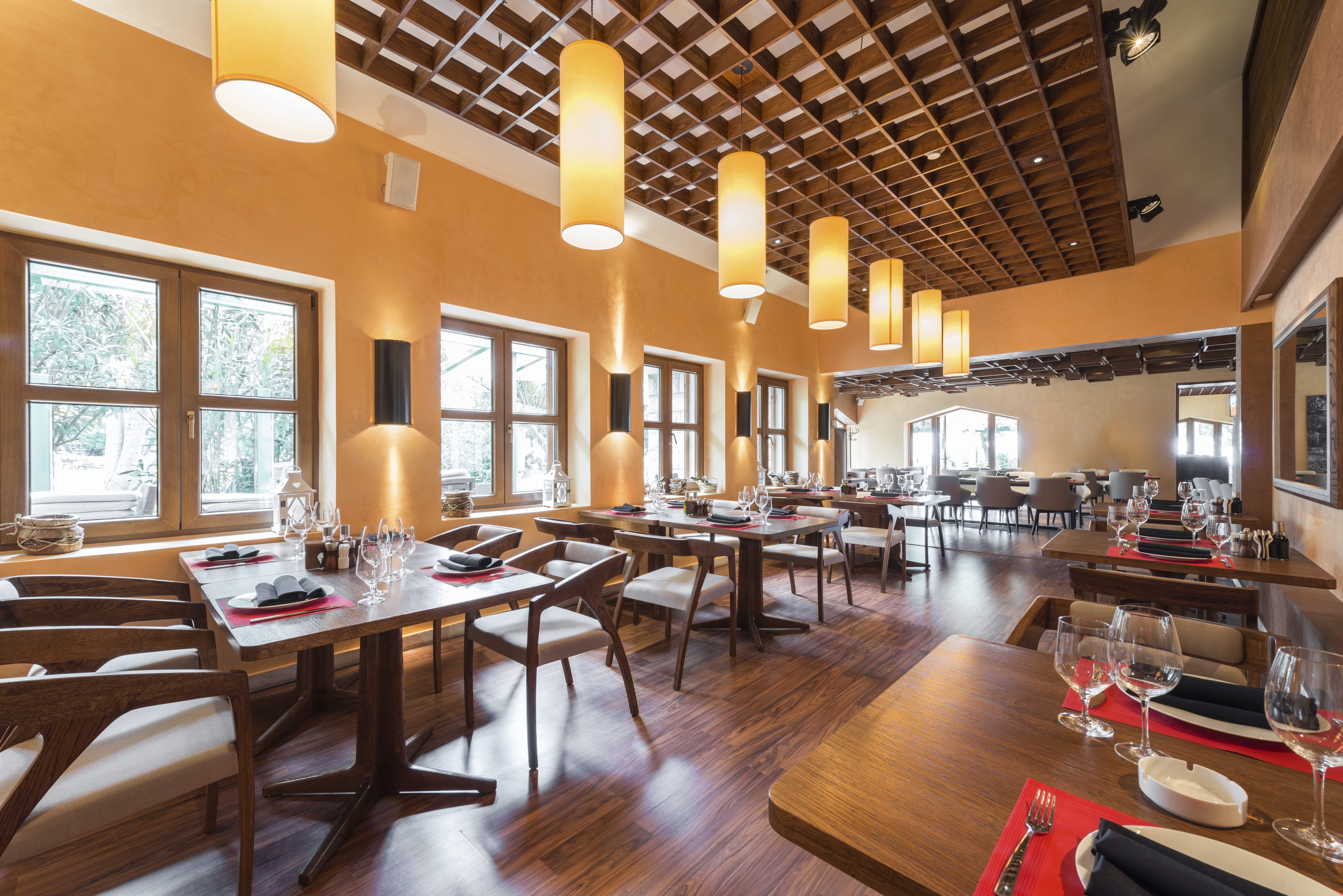
The Origin of Artificial Light.
Incandescent and Tungsten Halogen Lamps.
Halogen and incandescent lamps are much more advanced than the carbon filament lamp, but this robust and easy-to-use type of lamp is now considered unsuitable for mass use due to its low energy efficiency.
They are increasingly being ousted from the market by EU directives.
Yet they do have their charms: they provide very pleasant, warm light with perfect colour rendering and so they are also well tolerable even for light-sensitive people. Moreover, they do not contain any environmentally problematic substances and can therefore simply be disposed of with general household waste.
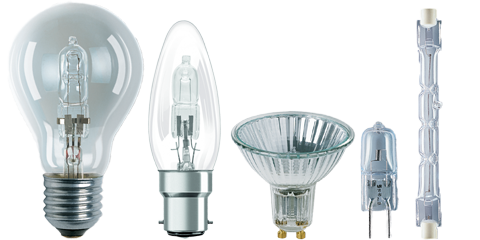

Mains Voltage Lamps with Omni-directional Radiation
- Perfect colour rendering
- Unrestricted dimming
- Operation in closed luminaires: double-ended halogen lamps
- Operation in open fixtures: all other incandescent lamps

Low Voltage Lamps with Omni-directional Radiation
- Operation in open fixtures
- Any burning position
- Perfect colour rendering
- Unrestricted dimming
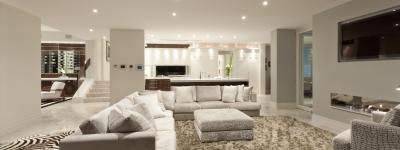
Low Voltage Lamps with Reflector
- Operation in open fixtures
- Any burning position
- Perfect colour rendering
- Unrestricted dimming

Dimming behaviour.
Halogen lamps can be dimmed without restriction. If the lamp has blackened due to too long dimmed operation, it can be burned clear again by operating at nominal voltage.Operation in open fixtures.
According to IEC 60598, operation in open fixtures is allowed for all halogen lamps in low-pressure technology (Skylight), those with protective glass or ones with outer bulbs.
Conventional halogen lamps with high pressure fillings reach operational pressures up to 25 bar, which means they are liable to explosion and must, therefore, be used in closed luminaries.
Skylight lamps (in low pressure technology) reach max. 2.5 bar, only, and so they are allowed for open fixtures.

The classic lights for works.
Low Pressure Discharge Lamps (AKA Fluorescent Lamps).
Fluorescent lamps - technically speaking, low-pressure discharge lamps - were until recently the easiest, best and cheapest way to illuminate offices, workshops and other commercial spaces efficiently. In the meantime, however, certain types of lamps are being replaced by LED lighting solutions in some areas of application, and EU directives will increasingly ensure this in the future.
Since fluorescent lamps contain mercury, they must be properly disposed of, i.e. given to collection points, which is shown by the symbol of the crossed-out waste bin.
Nevertheless, some applications can hardly be imagined without them, since fluorescent lamps are so versatile and LED solutions do not yet exist for all special places.

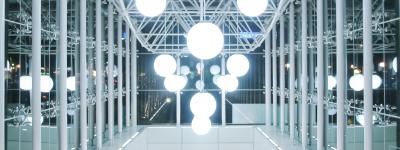
Non Integrated Compact Lamps
- Compact fluorescent lamps for professional applications
- Simple changing of lamp due to standardised base
- Cost-efficient maintenance
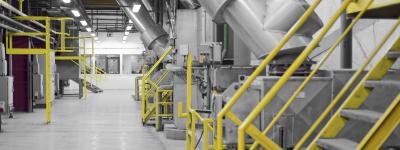
Fluorescent Lamps
- Reliable technology
- Many fields of application
- Cost-efficient maintenance

Starters for Fluorescent Lamps
- Replacement with every (RS11/ RS51) or every 4th lamp change (RS71/ RS72)
- Self-extinguishing Makrolon housing
- Starter for series connection also for one lamp circuit 110 - 127V
- Contain interference-suppression capacitor
- Various test marki, e.g. VDE/ ENEC 10

Dimming behaviour.
Compact fluorescent lamps and fluorescent lamps can be dimmed by suitable electronic ballasts only.
Commercially available energy-saving lamps (compact fluorescent lamps with integral ballast and standard base) are not dimmable.
Compact fluorescent lamps.
Compact fluorescent lamps differ from tubular ones by a smaller diameter of the glass tube and by the “folding” of the length which is needed for light generation and being held in one base. Starter and interference suppression capacitor are built in this base (2-pin) for some types of lamps (Ralux, - Duo, -Trio). These lamps cannot be dimmed. The lamps with 4-pin-base depend on external ignition by starter or ECG (Ralux .../E, Long, Long LT, Twin), on the other hand they can be dimmed if operated with suitable accessories and they can also be used for safety illumination.
Switching robustness is determined at a switching rhythm of 60s on, 180s off and can be found in the tables of technical data for the Compact Fluorescent Lamps wanted. Compact fluorescent lamps with integral ECG (Energy saving lamps) are not suitable for emergency operation.
In outdoor applications energy saving lamps are to be used in closed, well aired luminaires only.

The Bright Ones.
High-Pressure Discharge Lamps.
In terms of lighting technology, “a lot of light from a small burner” is the most outstanding property of high-pressure discharge lamps. Thanks to the reflector in the luminaire, the light can be easily directed to where it is needed. Overall, the systems are proven and robust technology. They are therefore still widely used today in large-area, sports facility and industrial hall lighting, as well as and not least in street lighting.
The operation of this type of lamp is demanding: the selection of the suitable control gear and the correct installation require a certain amount of specialist knowledge and must, therefore, be carried out by a specialist. High pressure discharge lamps also contain mercury and must be disposed of properly.
A conversion to LED lighting systems (complete refurbishment) is now possible in many applications, but must be economically, electrically and photometrically tested and professionally accompanied. Our experts from the Radium Sports & Area team will be happy to support you with any questions you may have on this complex of topics.
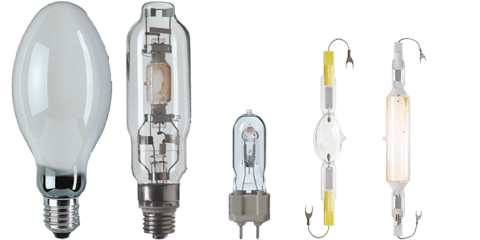

Metal Halide Lamps with Ceramic Burner
- Reliable technology
- Many fields of applications
- Very good colour stability during service life
- Excellent light distribution
Metal Halide Lamps with Quartz Burner
- Reliable technology
- Many fields of applications
- Excellent light distribution
- Operation in enclosed luminaires
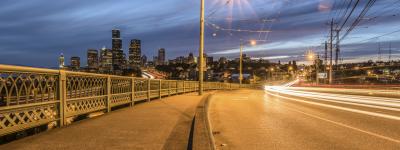
High Pressure Sodium Vapour Lamps
- Reliable and robust technology
- Service life in tune with maintenance intervals
- Yellow light perserves insects
- Wavelength range stimulates plant growth

Dimming behaviour.
The higher thermal robustness of the round shape burner ceramics enables an improved dimming behaviour regarding luminous efficiency and colour rendering compared to metal halide lamps with quartz burner. With dimming a wandering of chromatic coordinates still happens.
Lamps operated with dimming have got a stronger decrease of luminous flux and more deviation of colour coordinates over the lamp’s life. The way of dimming has got great influence on the results, here. We recommend dimming by controllable square-ECG, we advise completely against dimming by voltage reduction or by leading edge control. We cannot guarantee that lamps in dimmed operation meet their assured properties. RNP lamps can be operated with reduced power up to 50% of nominal power by impedance change if their start takes place at nominal power.

Those for special applications and those for the whole world.
Signal Lamps.
Export-Lamps without CE Marking.
Special lamps are still needed today for some fields of application, such as for airfield lighting with current-controlled halogen incandescent lamps. In ship position lanterns and in traffic signal systems (traffic lights), there are still many older installations that require incandescent lamps as replacement equipment.
Since this is simple, robust technology, the lamps are easy to operate and replace. Disposal is also no problem.
In Europe, high expectations are placed on light sources, which can no longer be met by inexpensive, simple and robust products, but which are still in demand internationally. are still in demand internationally. Such products are then shipped without CE marking directly from the production facility outside Europe to customers outside Europe as well.
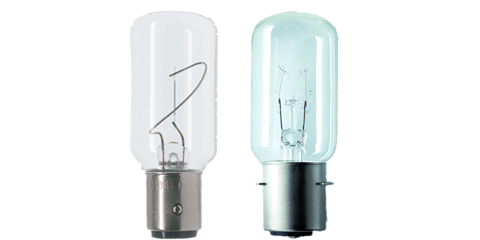

Signal Lamps
- Proven and robust technology
- Halogen lamps for airfield lighting
- Current-controlled halogen lamps
- Signal lamps for navigation lights
- Approved by the German Federal Maritime Office, Hamburg
- Lamps for traffic signal systems (traffic lights)
- Individual service life tuned in with maintenance intervals

Non-EU Export Lamps
without CE Marking
- Reliable and robust technology
- Cost-efficient maintenance
- No CE marking, no distribution in the EU
